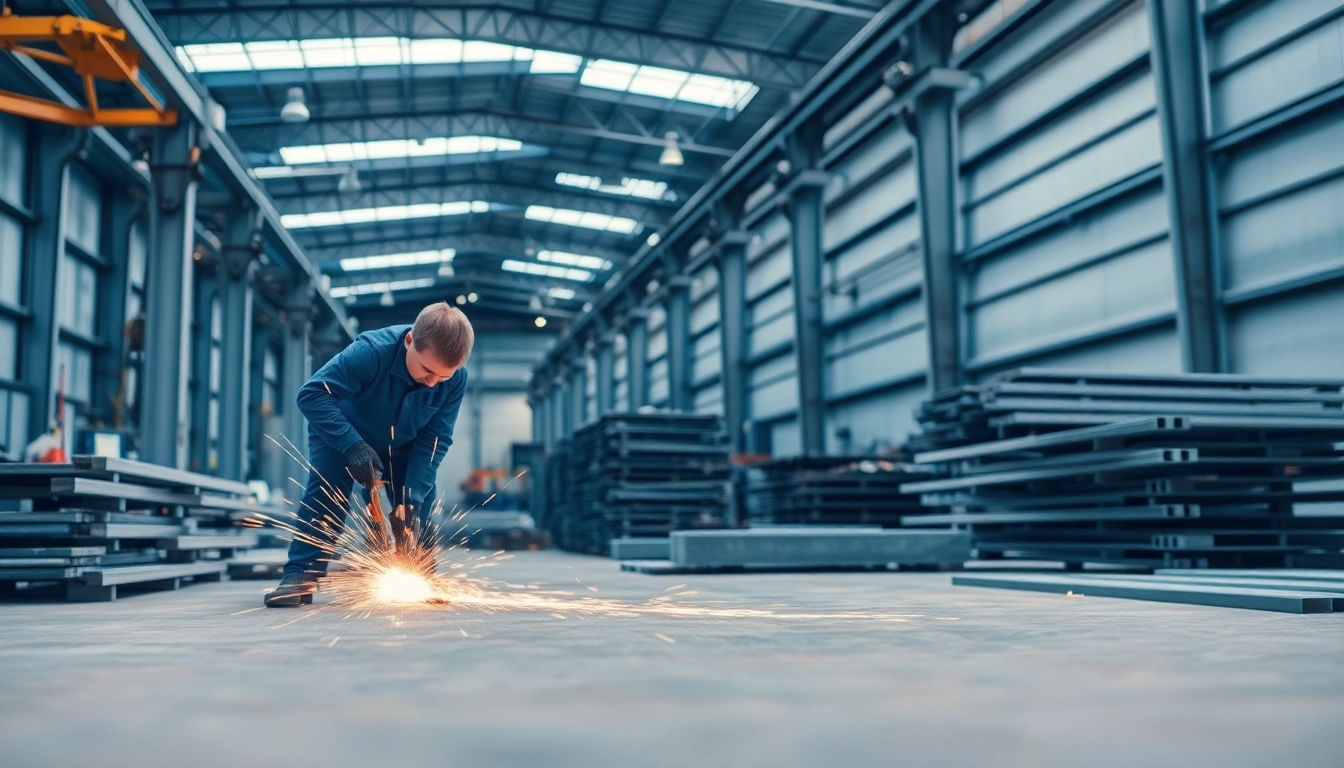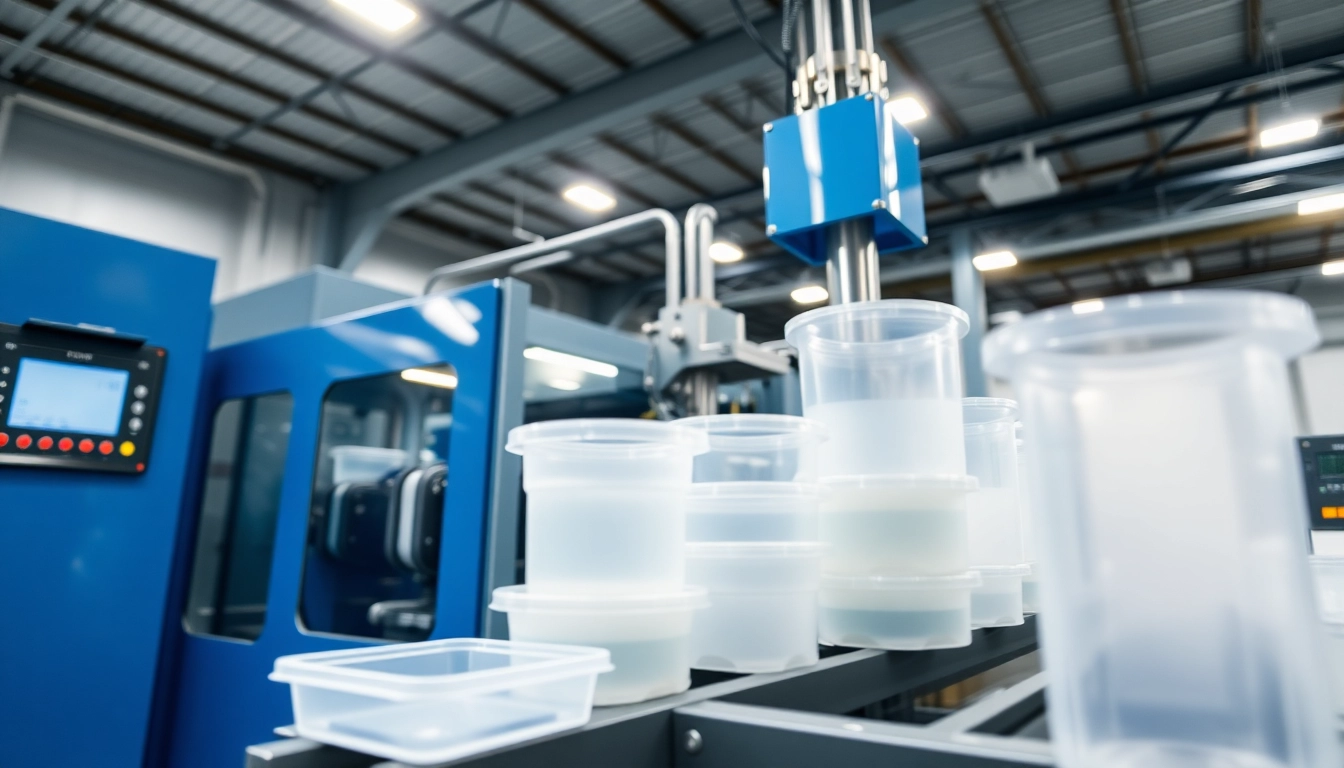Introduction to Structural Steel Fabrication
Definition and Importance
Structural steel fabrication is a crucial aspect of the construction industry, encompassing the design, cutting, bending, and assembly of steel structures that serve as the backbone of buildings, bridges, and various infrastructures. The aggressive demand for efficient and durable construction solutions has propelled the significance of structural steel fabrication, making it a preferred material for architects and engineers looking to deliver resilient structures that can withstand natural and human-induced forces.
This process is not simply a matter of convenience; it guarantees safety, longevity, and adaptability in engineered systems. As construction techniques evolve, the role of structural steel fabrication becomes even more pivotal, ensuring that structures meet modern standards and aesthetics while adhering to local and global construction codes.
Applications in Construction
The applications of structural steel fabrication are vast and varied. In the realm of commercial construction, structural steel is utilized in the framing of office buildings, retail spaces, and industrial complexes. In addition, its inherent strength allows for longer spans and fewer supports, which can optimize building layouts and reduce material costs.
Moreover, structural steel fabrication is essential in infrastructure projects, including bridges and highways. The ability to produce large, intricate components in a controlled environment streamlines the construction process and minimizes on-site labor, leading to reduced timelines and enhanced safety.
Key Materials Used
The primary material in structural steel fabrication is, of course, steel itself, which is prized for its high strength-to-weight ratio, ductility, and resistance to adverse environmental conditions. Common grades used include ASTM A36, A992, and A572, each offering unique properties suitable for different applications.
Alongside steel, various coatings and treatments are employed to enhance performance characteristics. For instance, galvanized steel is utilized to prevent corrosion, while fireproofing materials are applied to meet safety standards. Understanding these materials is critical in selecting the right options for specific projects, ensuring both compliance and longevity.
The Structural Steel Fabrication Process
Step-by-Step Overview
The structural steel fabrication process is a multi-step operation that includes several key phases:
- Design and Engineering: This initial phase involves creating detailed design schematics and structural calculations. Advanced software tools, such as Building Information Modeling (BIM), can be employed to ensure precision.
- Material Procurement: Once the designs are finalized, the necessary materials are sourced. This phase is crucial as it influences both budget and timeline.
- Cutting and Shaping: Steel components are cut to specific lengths and shapes using various methods, including lasers, saws, and plasma cutting technology, ensuring high accuracy.
- Assembly: The cut pieces are assembled using techniques such as welding and bolting. Skilled fabricators ensure that connections between components are robust and meet engineering standards.
- Finishing: After assembly, finishing processes are carried out, which may include painting, galvanizing, or applying fireproofing materials.
- Inspection and Quality Control: Throughout every stage, quality control measures are implemented to ensure that all components meet safety and regulatory standards before being shipped to the construction site.
Machinery and Tools Involved
The efficiency of structural steel fabrication is significantly enhanced by the use of advanced machinery and tools. Equipment such as CNC (Computer Numerical Control) machines allows for high-precision cuts and shapes, minimizing waste and ensuring consistency.
Other essential tools include:
- Water Jet Cutters: These utilize high-pressure water jets mixed with abrasive materials to cut through steel cleanly without altering its properties.
- Laser Cutters: Laser technology provides exceptional precision in cutting intricate designs with minimal material wastage.
- Welders and Welding Robots: Automated welding systems ensure strong and reliable joints while allowing for increased production speed.
- Drilling Machines: These are used to create holes for bolting or attachment purposes, crucial for the assembly phase.
Quality Control Measures
Quality control is an integral part of structural steel fabrication, directly impacting the safety and performance of the finished product. Essential measures include:
- In-Process Inspections: Regular checks during different stages of fabrication ensure that components meet design specifications.
- Non-Destructive Testing: Techniques such as ultrasonic testing or magnetic particle inspection are utilized to detect any internal flaws or defects without compromising the material.
- Final Quality Assurance: Before delivery, all finished products undergo a final inspection where dimensions, finishes, and tolerances are scrutinized.
Advantages of Structural Steel Fabrication
Cost Efficiency
One of the foremost advantages of structural steel fabrication is its cost efficiency. Although the initial outlay for structural steel materials may seem higher compared to alternatives such as wood or concrete, the long-term benefits significantly outweigh the costs. This material’s durability reduces maintenance and repair expenses over time.
Additionally, the speed of fabrication and erection translates to lower labor costs, shortened project timelines, and minimized financial risk for stakeholders involved in construction projects. This makes structural steel an economically viable option for both large-scale industrial applications and smaller commercial endeavors.
Durability and Strength
Structural steel is renowned for its strength and durability, which are critical factors in construction. It can withstand heavy loads, resist environmental influences such as temperature fluctuations, moisture, and corrosive substances, and maintain structural integrity over extended periods.
Moreover, structural steel has excellent fatigue resistance, enabling it to endure repeated load cycles without failure. This quality is particularly advantageous in high-stress applications, such as bridges and tall buildings subjected to wind, seismic events, and dynamic loads.
Design Flexibility
The versatility of structural steel allows architects and designers to push the boundaries of creative expression while maintaining structural integrity. Steel can be manufactured into a variety of shapes and sizes, enabling the construction of complex and innovative designs that would be impossible with traditional materials.
In terms of aesthetics, structural steel can be easily tailored to complement the architectural vision without compromising on functionality. The ability to produce large, open spaces without the need for excessive internal supports allows for sleek designs that maximize usability and visual appeal.
Common Challenges in Structural Steel Fabrication
Material Sourcing Issues
One significant challenge in structural steel fabrication is the sourcing of high-quality materials. Fluctuating market prices for steel can affect project budgets and timelines. Furthermore, the supply chain disruptions and issues with suppliers can lead to delays and project inefficiencies.
To mitigate these challenges, firms should establish strong relationships with reliable suppliers and consider bulk purchasing agreements to lock in prices and ensure material availability.
Labor Challenges
The structural steel fabrication industry faces labor challenges, including a shortage of skilled workers. As this field requires specialized training and expertise, attracting and retaining qualified labor is critical for maintaining quality and efficiency.
Organizations can address this challenge by investing in training programs or partnering with educational institutions to develop a pipeline of skilled employees committed to learning trade practices and standards.
Regulatory Compliance
Compliance with ever-changing building codes and regulations can pose a challenge for structural steel fabrication companies. Different regions require adherence to distinct codes, which can complicate projects, especially those spanning multiple jurisdictions.
Establishing a robust compliance management system ensures that all designs and processes meet or exceed these mandated requirements, thus minimizing the risk of delays or penalties incurred due to non-compliance.
Future Trends in Structural Steel Fabrication
Technological Innovations
The future of structural steel fabrication is closely tied to technological advancements. Innovations in robotics, automation, and artificial intelligence promise to revolutionize fabrication processes. Automated systems can enhance precision, increase production efficiency, and reduce labor costs.
Moreover, the integration of virtual reality (VR) and augmented reality (AR) technologies can improve design accuracy and facilitate project visualization, ultimately leading to better decision-making for stakeholders.
Sustainability Practices
With the growing emphasis on sustainability in construction, structural steel fabrication is adapting to incorporate eco-friendly practices. The use of recycled steel and sustainable production processes supports a decrease in carbon footprint and resource consumption.
Additionally, initiatives like designing for disassembly and reusability are gaining traction, further enhancing the sustainability of steel structures while meeting environmental compliance.
Market Growth Projections
The structural steel fabrication market is expected to see continued growth driven by urbanization, infrastructure development, and investment in renewable energy projects. As cities expand and the demand for efficient buildings and infrastructure rises, the need for quality fabrication will remain essential.
Additionally, the push for green building practices aligns well with the advantages of structural steel fabrication, reinforcing its place in future construction trends and market strategies.



